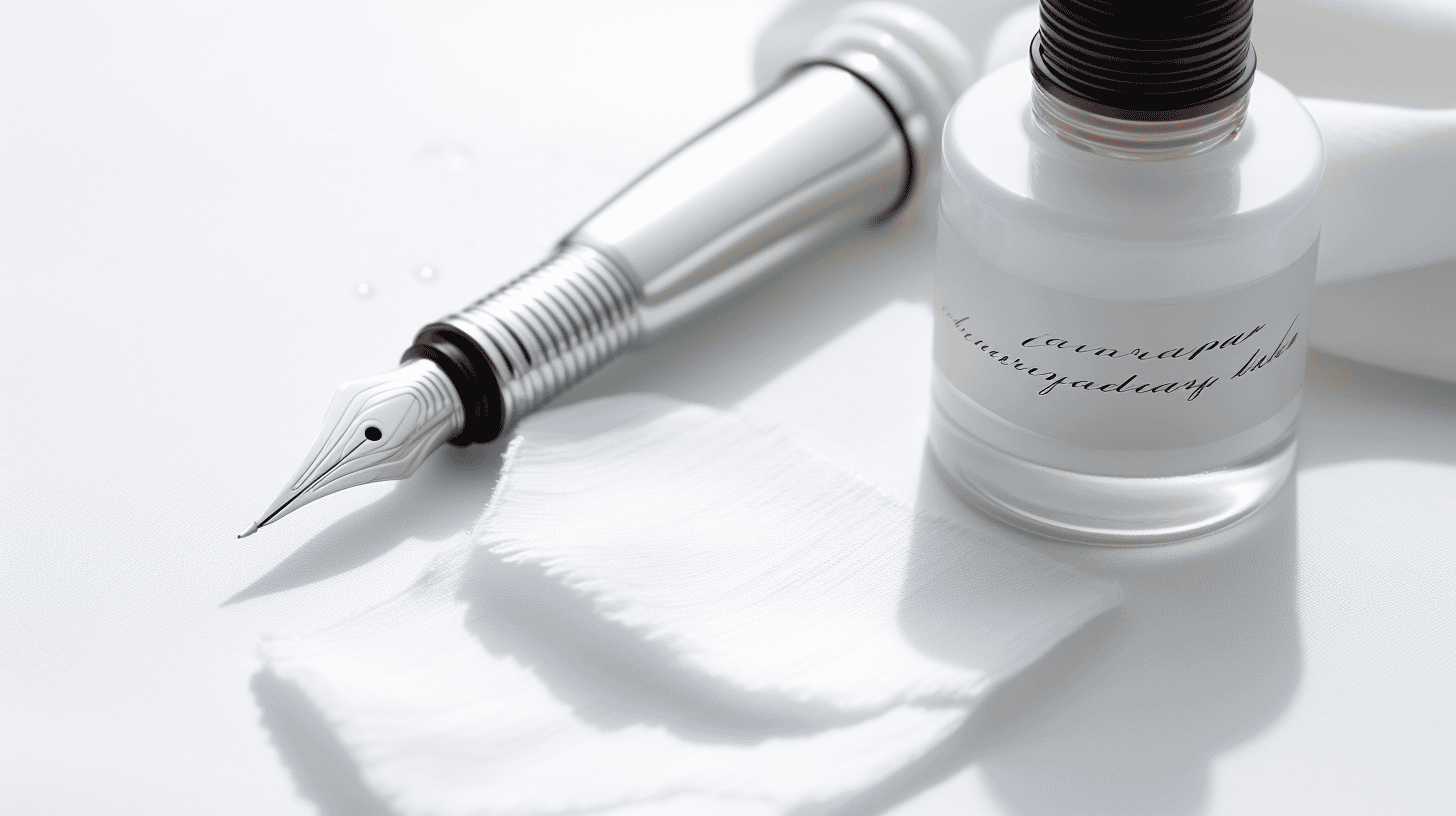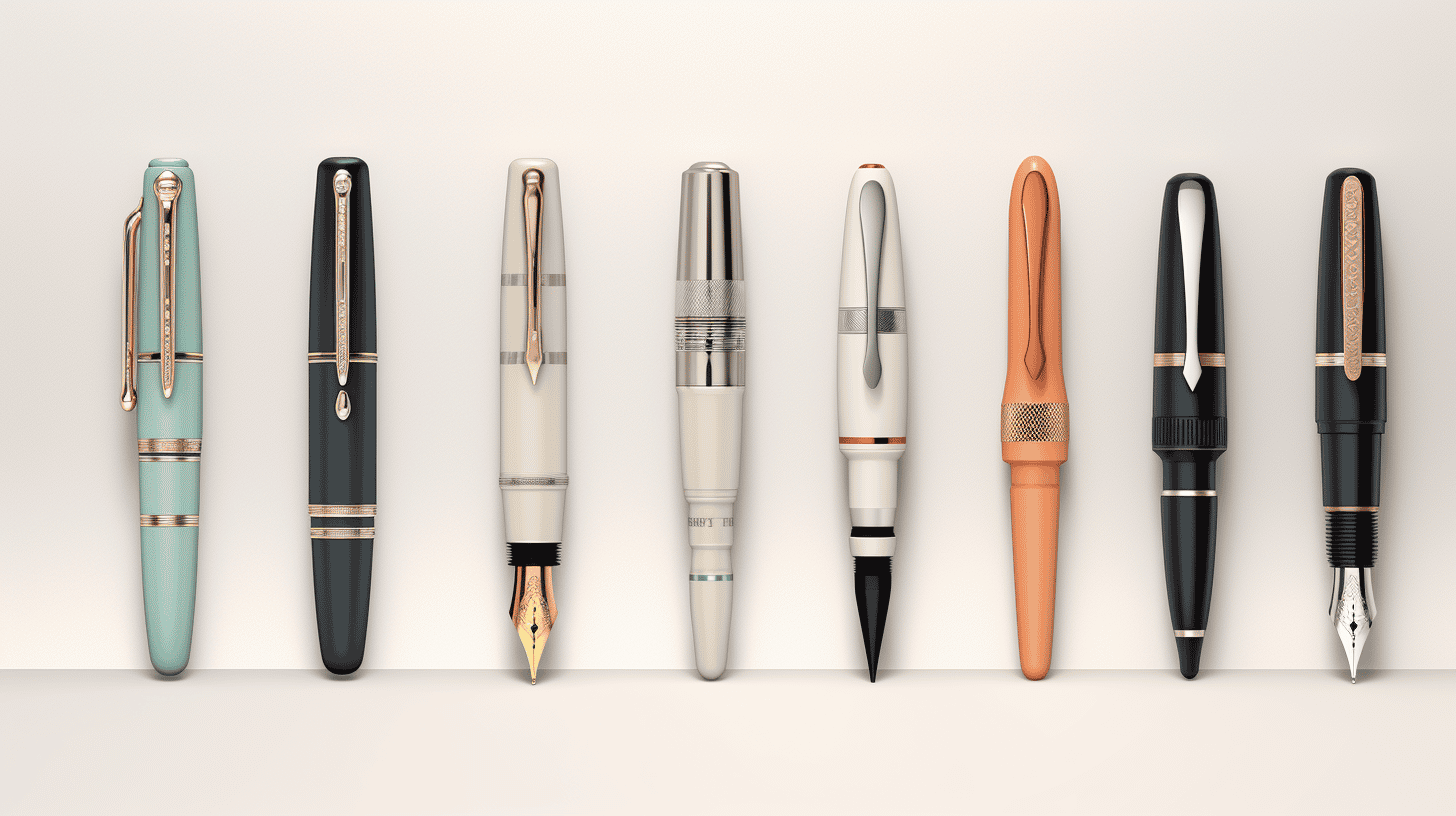
How to Maintain and Care for Your Fountain Pen
When it comes to writing, there's something undeniably magical about using a fountain pen. The way the ink glides smoothly across the paper, leaving behind elegant strokes, creates a unique and timeless experience. Whether you are a seasoned writer or simply enjoy the art of penmanship, owning a fountain pen is a cherished possession.
However, as with any prized possession, it's important to take care of your fountain pen to ensure its longevity and optimal performance. Regular maintenance and care can make all the difference in preserving your pen's functionality and enhancing your writing experience. In this article, we will explore the importance of regular pen maintenance and provide you with essential tips to keep your fountain pen in its best shape. So, without further ado, let's delve into the world of fountain pen care and maintenance!
The Importance of Regular Pen Maintenance
Taking care of your fountain pen is essential to ensure its longevity and optimal performance. Regular maintenance not only keeps your pen in pristine condition, but it also helps prevent clogs, leaks, and other issues that can affect your writing experience. In this article, we'll delve into the necessity of regular cleaning and provide some helpful tips to keep your pen in tip-top shape.
The Necessity for Regular Cleaning
Just like any other writing instrument, fountain pens require regular cleaning to remove accumulated ink residue and prevent ink buildup that can impede ink flow. Over time, ink can dry out and form deposits inside the pen, causing clogs and inconsistent ink flow. By cleaning your pen regularly, you can maintain its smooth writing performance and avoid frustrating interruptions.
Cleaning your fountain pen involves disassembling its various components, such as the nib, feed, and converter or cartridge, and rinsing them thoroughly with lukewarm water. This process helps remove dried ink and any contaminants, ensuring that your pen functions optimally.
Rinsing and Cleaning Prior to Ink Switch
Before switching to a different ink color or type, it's crucial to thoroughly rinse and clean your pen. This step is particularly important if you're transitioning from a dark, intense ink to a lighter color or vice versa. Failure to clean your pen before changing inks can result in unwanted color mixing, which may affect the appearance and quality of your writing.
To clean your pen before switching inks, follow these steps:
- Disassemble your pen, removing the nib, feed, and converter or cartridge.
- Rinse each component separately with lukewarm water until the water runs clear.
- Gently wipe the components dry with a lint-free cloth or paper towel.
- Allow the pieces to air dry completely before reassembling your pen.
By following this simple cleaning process, you can ensure a seamless transition between inks and avoid any unwanted color blending that could affect the clarity and vibrancy of your writing.
Remember, regular cleaning every 4 to 8 weeks or before switching inks is recommended for fountain pen maintenance. By incorporating these practices into your pen care routine, you can enjoy a smooth and consistent writing experience for years to come.
For more comprehensive guidance on fountain pen care and maintenance, check out this Comprehensive Guide for Beginners. It's a valuable resource that covers everything you need to know about taking care of your pen and getting the most out of your writing instrument.
Basic Care and Maintenance Tips
Taking care of a fountain pen is essential to ensure its longevity and optimal performance. Proper maintenance and regular cleaning can help prevent ink dryness and keep the nib in good condition. Here are some simple care tips to keep your fountain pen in pristine condition:
Ink Dryness Prevention
One of the most common issues with fountain pens is ink dryness. Leaving ink to dry out in the nib can result in clogs and hinder smooth ink flow. To prevent this, it's important to keep the pen inked and ready to write. Here are a few tips:
- Use your pen regularly: Regular use prevents the ink from drying out and keeps the nib lubricated. If you don't plan on using your pen for an extended period, consider emptying it and rinsing it out to avoid ink residue buildup.
- Store the pen properly: Store your fountain pen horizontally or with the nib facing upward. This prevents ink from settling in the feed and reduces the risk of clogs.
Nib Maintenance
The nib is the heart of any fountain pen. It's crucial to take care of it to ensure smooth and consistent writing. Here are a few tips for maintaining your nib:
- Clean the nib regularly: Use a soft cloth or tissue to gently wipe the nib after each use. This removes any excess ink and prevents buildup. Avoid using harsh chemicals or abrasive materials that can damage the nib.
- Keep the nib well-lubricated: Apply a small amount of fountain pen lubricant (also known as pen flush) to the nib periodically. This helps keep the nib in good condition and ensures smooth ink flow.
The Use of Cold Tap Water and Bulb Syringe
In addition to regular cleaning, occasional deep cleaning can help remove dried ink and keep your fountain pen in optimal condition. Here's how to do it:
- Flushing pen with cold tap water: Fill a glass with cold tap water and immerse the nib section of the pen in the water. Gently move the pen up and down to create a flushing action. This helps remove any dried ink and debris from the pen.
- Using a bulb syringe: A bulb syringe is a handy tool for cleaning a fountain pen. Fill the bulb syringe with cold tap water and gently squeeze it while directing the water into the nib section of the pen. The force of the water can help dislodge any stubborn ink residue.
Remember to dry the pen thoroughly after cleaning before using it again. By following these basic care and maintenance tips, you can keep your fountain pen in excellent condition and enjoy smooth, effortless writing for years to come.
For more detailed information on fountain pen care and maintenance, check out the Ultimate Fountain Pen Guide.
Advanced Cleaning Methods
Cleaning fountain pens can be a delicate process, especially when dealing with stubborn ink stains or complicated internal mechanisms. Thankfully, there are advanced cleaning methods available that can help restore your pen to its original glory. In this section, we will explore some of these methods and offer some helpful tips along the way.
Ultrasonic Cleaners
One method that has gained popularity among fountain pen enthusiasts is the use of ultrasonic cleaners. These devices use high-frequency sound waves to create microscopic bubbles that gently remove dirt, ink, and debris from the pen. Here are a few key points to keep in mind when using an ultrasonic cleaner:
- Fill the ultrasonic cleaner with water or a cleaning solution specifically designed for fountain pens. Avoid using harsh chemicals or solvents, as they can damage the pen.
- Place the pen in a pen basket or holder to prevent it from directly touching the bottom of the tank. This will prevent any potential damage from vibration.
- Run the ultrasonic cleaner for the recommended amount of time, typically a few minutes. Be sure to follow the manufacturer's instructions for optimal results.
- After cleaning, remove the pen from the ultrasonic cleaner and rinse it thoroughly with water. Allow it to air dry completely before reassembling and using it again.
It's important to note that not all fountain pens are suitable for ultrasonic cleaning. Pens with delicate materials, such as vintage pens or pens with celluloid barrels, should be cleaned using other methods to avoid potential damage. Always refer to the pen manufacturer's guidelines before using an ultrasonic cleaner.
Disassembly Precautions
While disassembling a fountain pen may be necessary in some cases, it should be approached with caution to prevent accidental damage. Here are a few precautions to keep in mind:
- Only disassemble a fountain pen if you are confident in your ability to put it back together properly. If you are unsure, it's best to seek professional assistance.
- Take note of how the pen is assembled before disassembling it. This will help you remember the correct order and orientation of the various components.
- Work in a clean and well-lit area to avoid losing any small parts during the disassembly process. Use a soft cloth or tray to keep track of the components as you remove them.
- Avoid using excessive force when disassembling the pen. Gentle twisting or pulling is usually sufficient to separate the components. If you encounter resistance, stop and reassess the situation.
Remember, not all pens are designed to be disassembled by the user. Some pens have sealed or one-piece barrels that cannot be easily taken apart. Always refer to the pen manufacturer's guidelines before attempting to disassemble your fountain pen.
Cleaning Different Types of Fountain Pens
Different types of fountain pens may require different cleaning techniques. Here are a few tips for cleaning specific types of fountain pens:
- Cartridge Converter Pens: These pens are relatively easy to clean. Remove the converter or cartridge from the pen, flush it with water, and use a bulb syringe to force water through the nib to flush out any ink residue. Allow the pen to air dry before reassembling.
- Piston Filler Pens: Piston filler pens have an internal mechanism that draws ink into the pen. To clean them, fill and empty the pen with water repeatedly until the water runs clear. Repeat this process several times to ensure a thorough cleaning.
- Vacuum Filler Pens: Vacuum fillers have a unique filling system that requires a special cleaning technique. Fill the pen with water, fully depress the plunger, and release it to create a vacuum that draws water into the pen. Repeat this process several times to clean the pen thoroughly.
By following these advanced cleaning methods and precautions, you can effectively maintain and preserve your fountain pen's performance and appearance. Remember, proper cleaning techniques can prolong the life of your pen and ensure optimal writing experience.
For a more in-depth understanding of how a fountain pen works, you can check out this article: How A Fountain Pen Works.
Conclusion
In conclusion, maintaining and caring for your fountain pen is essential to ensure its longevity and optimal performance. By regularly cleaning and properly storing your pen, you can prevent ink dryness, maintain the integrity of the nib, and prolong the lifespan of your cherished writing instrument.
Remember, a well-maintained fountain pen not only enhances your writing experience but also reflects your personal style and appreciation for craftsmanship. So, make the effort to keep your fountain pen in top shape, and enjoy the smooth and effortless writing that a Wood Fountain Pen offers.
To explore our collection of exquisite wooden fountain pens, visit Wood Fountain Pens. Experience the elegance and precision of our handcrafted creations and elevate your writing to new heights.
Frequently Asked Questions
-
What is the best way to clean a fountain pen?
To clean a fountain pen, disassemble the pen, flush the nib and feed section with clean water, and use a pen cleaner solution if necessary. Allow the pen to dry completely before reassembling it.
-
How often should I clean my fountain pen?
It is recommended to clean your fountain pen every 3-4 weeks or whenever you change ink colors. Regular cleaning helps maintain optimal ink flow and prevents clogging.
-
Can I use any ink in a fountain pen?
No, not all inks are suitable for fountain pens. It is important to use fountain pen inks that are specifically designed for fountain pen use to prevent damage to the pen and ensure smooth writing experience.
-
How can I prevent ink leakage from my fountain pen?
To prevent ink leakage, make sure the pen is securely capped when not in use. Avoid strong temperature changes that can create pressure inside the pen. Also, store your fountain pen in an upright position to minimize the risk of leakage.
-
Do fountain pens require any special maintenance?
Fountain pens require regular cleaning and occasional maintenance. This includes proper storage, lubrication of the nib, and checking the ink flow. Following manufacturer's instructions and using a quality fountain pen will minimize the need for extensive maintenance.







Leave a comment
This site is protected by hCaptcha and the hCaptcha Privacy Policy and Terms of Service apply.